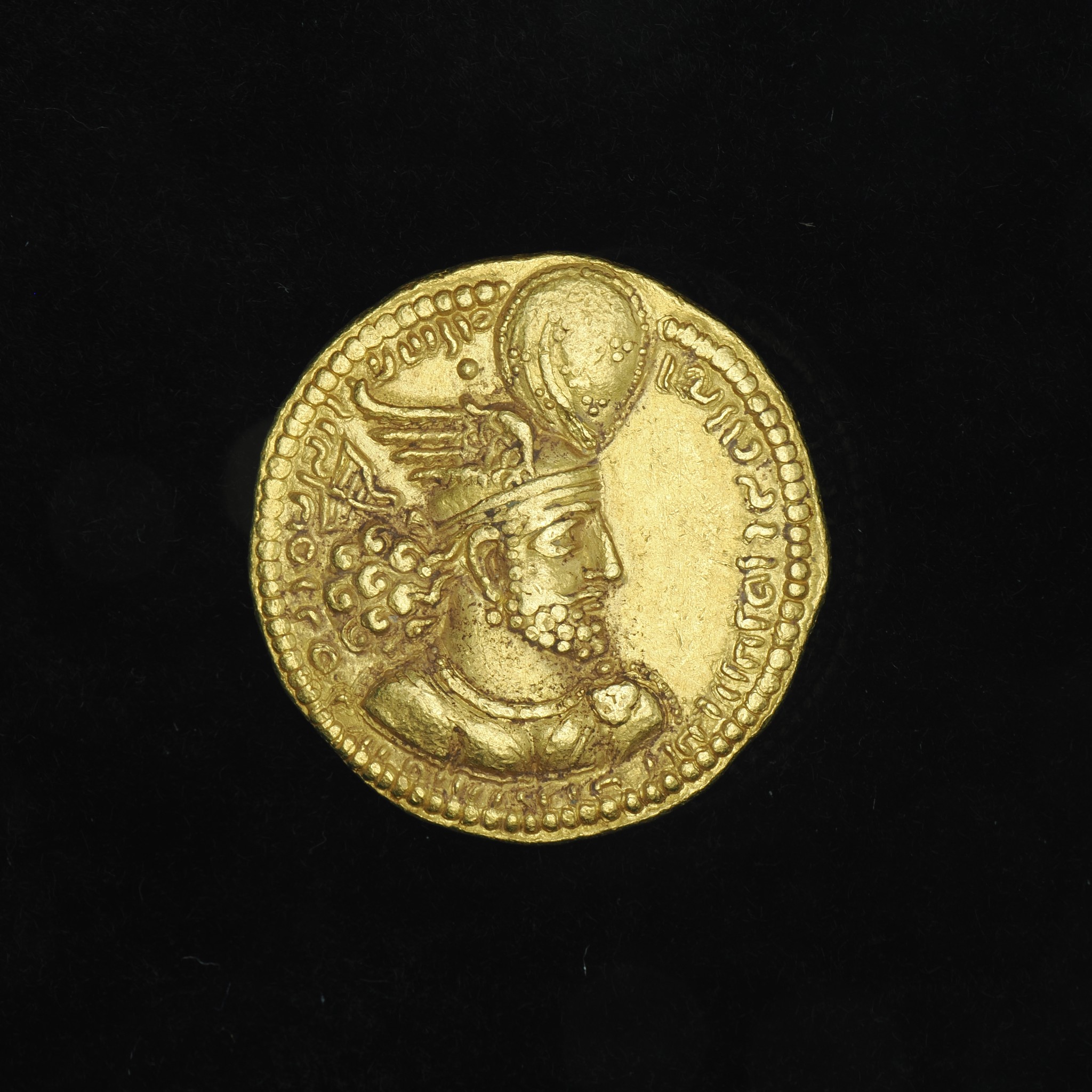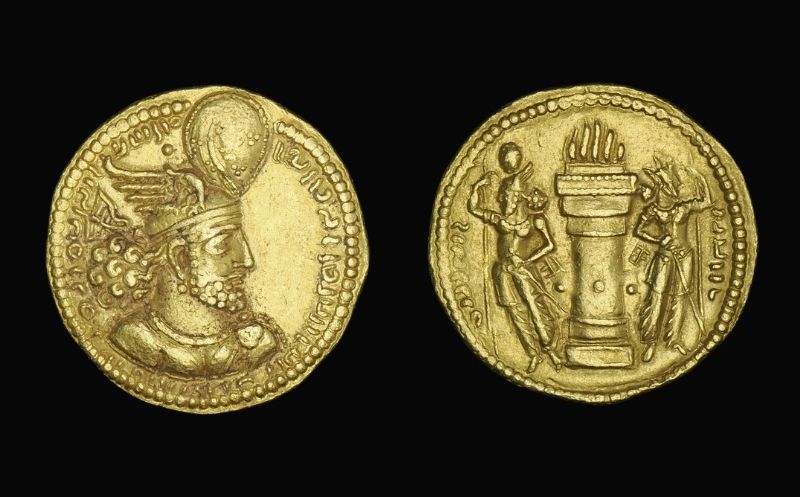Introduction:
The Imperial Power of Gold
The reign of Bahram II, a Sasanian king ruling from AD 276 to 293, represents a pivotal period in Persian imperial history. Amid internal power struggles and external pressures from Rome and Central Asia, Bahram II utilized religious imagery and divine kingship to consolidate power. One of the clearest surviving artifacts of his rule is his AV (gold) dinar, a high-value ceremonial coin whose design communicates divine legitimacy and religious authority.
Gold dinars under Bahram II are exceptionally rare compared to the more common silver drachms. These coins were likely struck for ceremonial or elite payments and offer unparalleled insight into Sasanian imperial ideology and Pahlavi literacy.
Obverse Analysis:
The Divine King
Image Reference: SASA-BAHR2-AV-DIN-001-OBV.JPG
- Depiction: Right-facing bust of Bahram II
- Crown: Winged crown with large globe and korymbos (crescent-topped globe)
- Attire: Armored bust, pearl-bordered collar, necklace with crescent pendants
- Pahlavi Legend (Right & Left):
- Typically: “Mazdēsn bay Warahrān šāhān šāh Ērān ud Anērān”
- Translation: “The Mazda-worshipping divine Bahram, King of Kings of the Iranians and non-Iranians”
Symbolic Analysis:
- The crown design is unique to Bahram II and underscores divine sanction through association with Mithra (sun deity).
- The use of the title “King of Kings” continues the Achaemenid and early Sasanian tradition, while the epithet “Mazdēsn” aligns the king with Zoroastrianism, reinforcing religious orthodoxy and divine rule.


Reverse Analysis:
The Fire Altar and Attendants
- Design: Zoroastrian fire altar flanked by two standing attendants or priests
- Attendants: Both figures wear winged crowns identical to Bahram II
- Flames: Tall vertical flames rise from a stepped altar
- Pahlavi Legend (encircling the rim): Often abbreviated, repeating royal titles and regnal information
Interpretation:
- The fire altar is central to Zoroastrian worship and symbolizes divine presence.
- The attendants could either represent royal investiture or divine guardianship.
- These elements together suggest the king is divinely protected and central to the cosmic order.
Linguistic & Epigraphic Notes
- Script: Middle Persian (Pahlavi), read right-to-left
- Character Forms: Letterforms are often highly stylized; standard references include the work of MacKenzie and Gyselen for identification.
- Title Formula: “Mazdēsn bay” was introduced by Ardashir I and maintained throughout the Sasanian line.
- Mint & Regnal Year: Not typically present on AV dinars, but may be seen in silver issues, useful for chronological anchoring.


Historical Context
Bahram II succeeded his father Bahram I and navigated a tumultuous era marked by:
- The revolt of his brother, Hormizd I Kushanshah in the East
- Roman military incursions under Carus
- Heavy involvement of the Zoroastrian clergy (Magi) in governance
Coinage was thus used as propaganda, emphasizing divine legitimacy, religious orthodoxy, and cosmic kingship. The use of gold further elevates the royal message to an elite audience, likely courtly or diplomatic in nature.
Interpreting Imperial Identity
Sasanian coins such as these dinars are more than mere currency, they are instruments of ideology. Through their inscriptions and symbols, they affirm the king’s divine right to rule, his alignment with Mazdaean faith, and his role as protector of both Iranian and universal order.
Studying such coins, especially rarities like the AV Dinar of Bahram II, allows scholars and collectors alike to decode imperial self-representation and the interplay between religion, art, and statecraft in Late Antiquity.
Interested in Authentic Sasanian Coins?
If you’re a collector, historian, or enthusiast looking to acquire authentic Sasanian coins like this gold dinar of Bahram II, we invite you to contact us directly at info@terranumis.com, or follow us on Facebook @terranumis for updates, insights, and featured pieces.
Explore our latest finds and curated selection at shop.terranumis.com.

